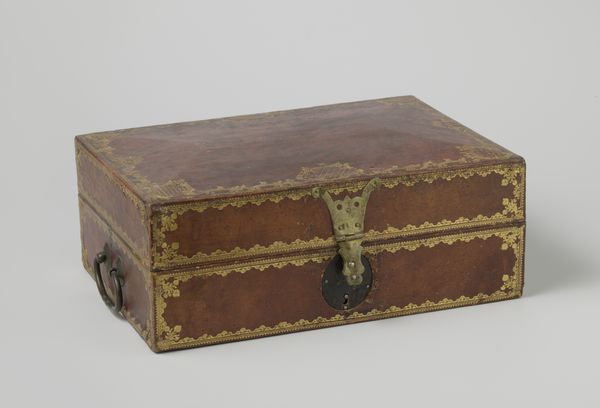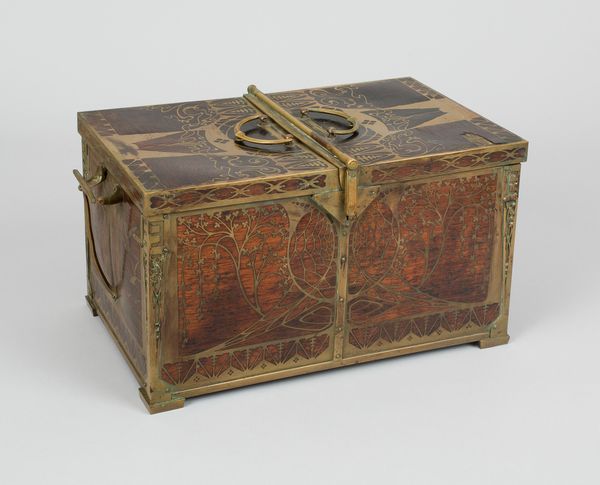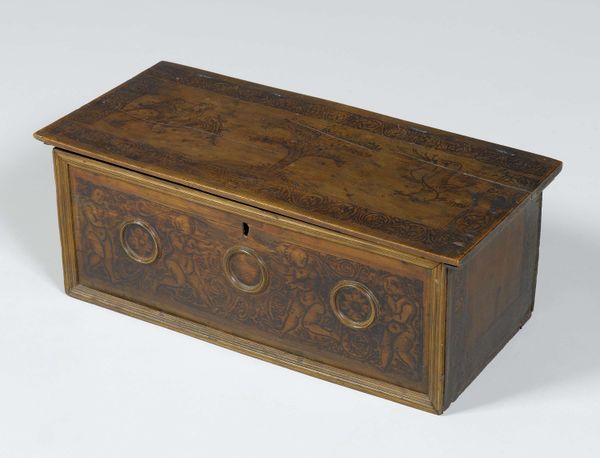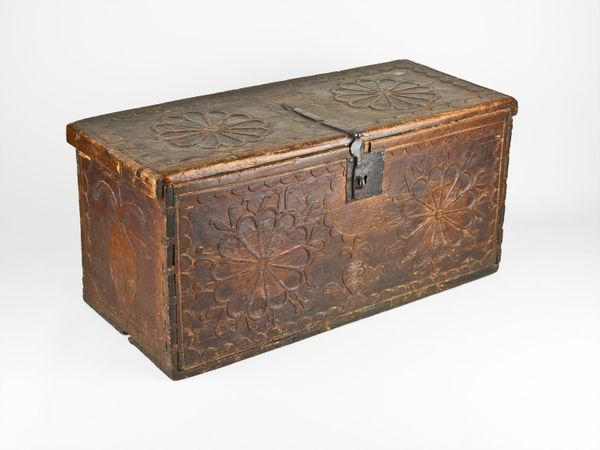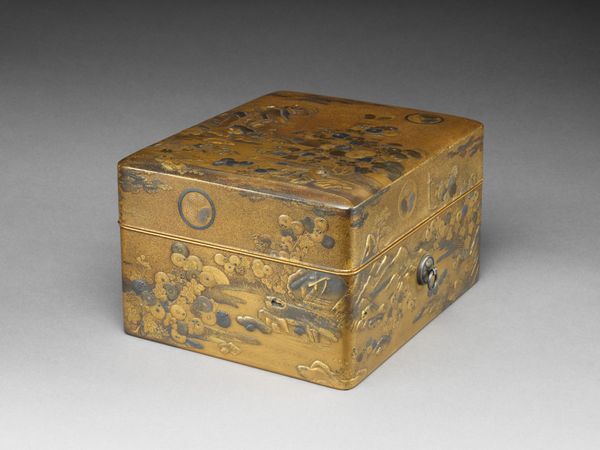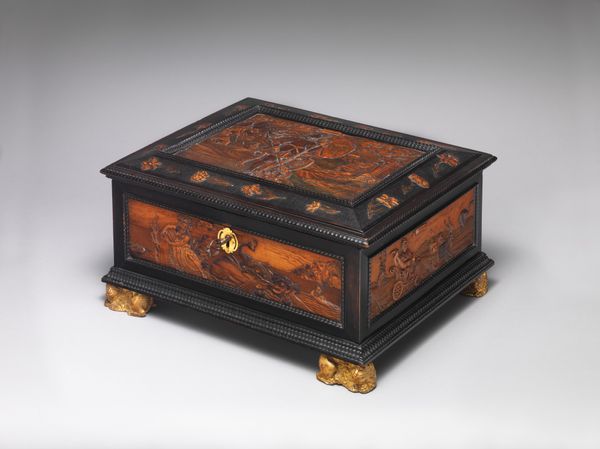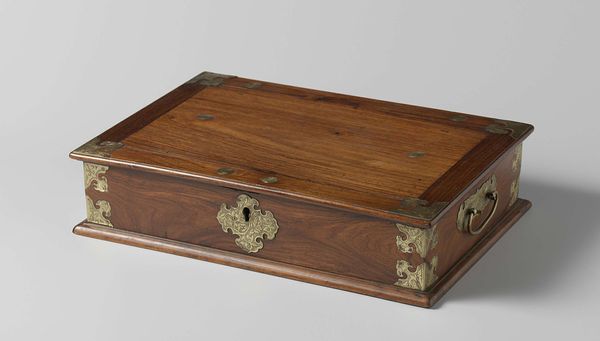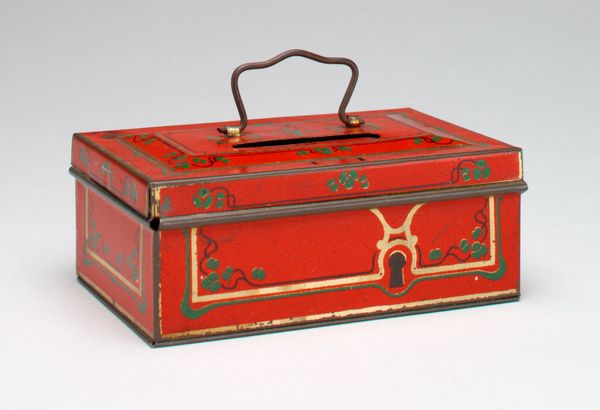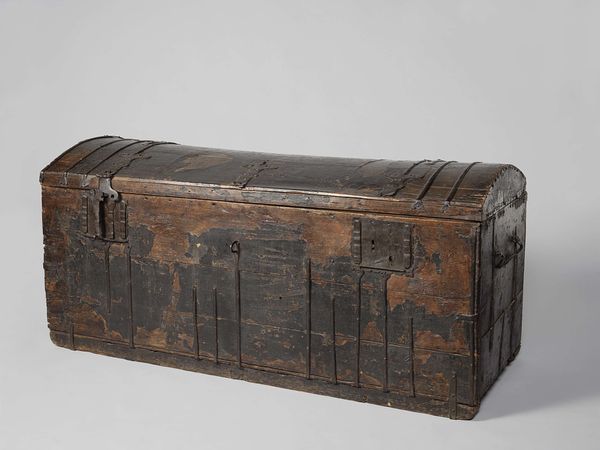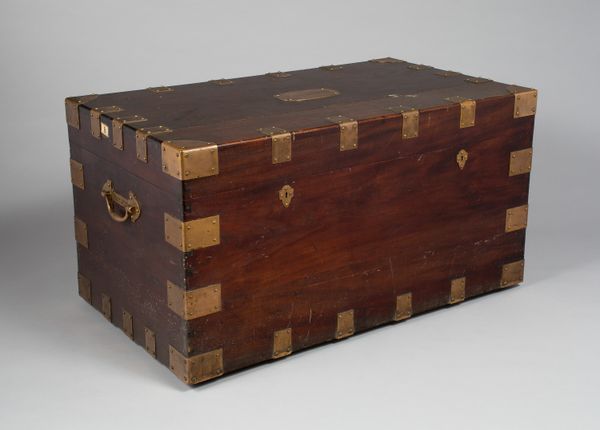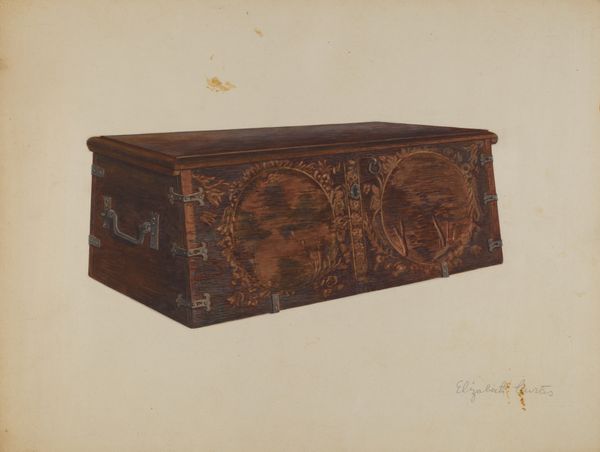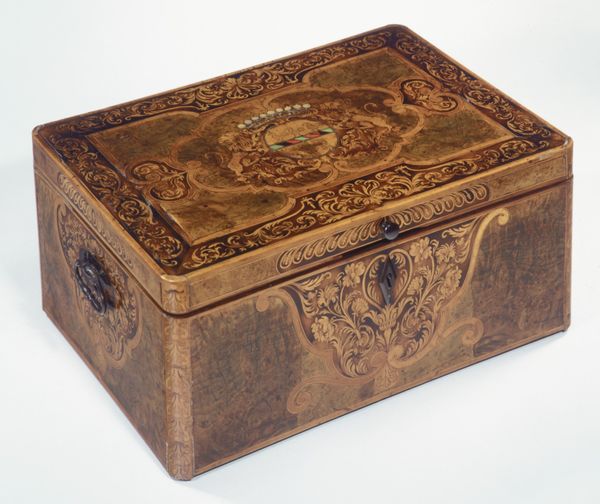
tempera, painting, wood
#
tempera
#
painting
#
furniture
#
folk-art
#
england
#
romanticism
#
wood
#
decorative-art
Dimensions: 20.3 × 53.3 × 25.4 cm (8 × 21 × 10 in.)
Copyright: Public Domain
Editor: Here we have an intriguing "Box" made sometime between 1800 and 1820 by an anonymous artist in England. It appears to be crafted from wood, decorated with tempera. The blue-green color and folk art floral designs give it such a charming and rustic aesthetic. What's your take on this piece, particularly concerning its role in its time? Curator: It’s easy to see the appeal. Objects like these, particularly chests, speak to a vibrant decorative art tradition that was deeply interwoven with English social life in the early 19th century. This box, like others of the era, wasn't just functional; it was a statement of identity, however modest. Consider where and by whom this box was likely commissioned and used. Its placement in the home would have signaled certain aspirations, wouldn't it? Editor: Absolutely, I see your point! It’s folk art, so I imagine it would have been accessible to the middle or even working classes, right? Maybe this wasn’t about high art collecting, but personalizing everyday objects. Curator: Precisely. The accessibility of decorative arts, compared to fine art paintings hung in galleries or stately homes, democratized artistic expression to a certain degree. The patterns and colors likely held regional significance or alluded to shared cultural values. These objects allowed people to subtly claim their own space within the rigid social hierarchies of the time. The very act of decoration, of claiming ownership through craft, can be read as a form of quiet resistance. Editor: So it's less about grand pronouncements and more about individual acts shaping a broader cultural landscape? It gives a whole new perspective to "decorative." Curator: Indeed. By understanding the context and considering how objects like this circulated, we uncover the power of even the simplest forms of art. Editor: Wow, looking at this box, it's amazing to consider how an object of daily use and 'mere decoration' has a deep historic significance. Curator: Agreed; It highlights how seemingly ordinary objects can embody so much about a society’s values and desires.
Comments
No comments
Be the first to comment and join the conversation on the ultimate creative platform.
